Striker-fired handguns have become the most popular segment of the modern market, widely used by military, law enforcement, and civilian gun owners alike. Known for their simplicity, reliability, and consistent trigger pulls, these pistols have a surprisingly long history reaching back to the early 20th century. Today we’re looking at the evolution of striker-fired handguns, from origin to market-dominance.
Striker-Fired Defined
In a striker-fired system, the striker (firing pin) is cocked and held under spring tension. When the trigger is pulled, the striker is released, to strike the primer of the cartridge, igniting the gunpowder and discharging the bullet. Lacking an external hammer, this internal mechanism gives striker-fired guns a modern, snag-free appearance. The most widely recognizable example of a striker fired system that people rarely consider is the bolt-action. Manually working the bolt cocks the striker, which is then released by the sear during the trigger pull.
Early Years
The concept of striker-fired handguns can be traced back to the late 19th century. Perhaps the earliest successful example is the C93, produced by Hugo Borchardt. This pistol was a notable early example of a functional semi-auto, and combined with the lack of a hammer, gave it an unusual, modern look. While it was rapidly outclassed by following designs it showcased the basic principles of striker-fired mechanisms and blazed the trail for everything we know about modern handguns today.
Advertisement — Continue Reading Below
Another important early striker-fired pistol (and one of the most iconic handguns of all time) is the Luger P08, designed by Georg Luger in 1898, and heavily influenced by Borchardt’s design. While the P08 is more famous for its toggle-lock mechanism, housed within that unusual action is a striker system very much like what we know today. The Luger P08 built and expanded on the C93’s success, becoming a standard sidearm of the German military in 1908 and saw extensive service in both World Wars.
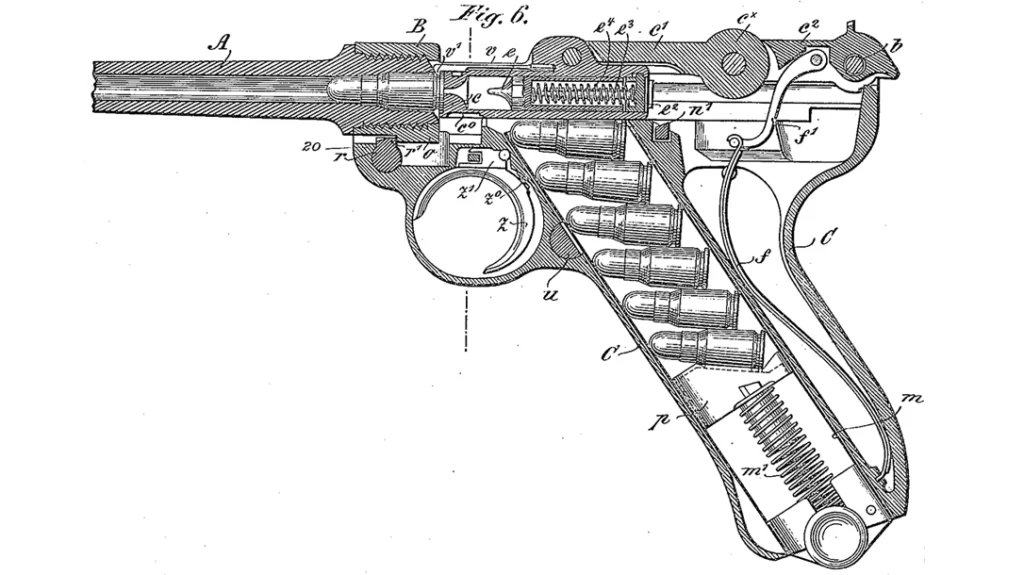
Advertisement — Continue Reading Below
The 1970s & Rise of Glock
In the infancy of semi-automatic pistols, the specifics of how the firing mechanism worked wereless significant than a reliable feeding system, and there was little focus on hammer vs striker. As magazine-fed systems became common and dependable, hammer-fired designs were more familiar, and dominated the market well into the mid-20th century. Revolvers, 1911-style pistols, and other hammer-fired designs were generally preferred for their durability, familiarity and seeming simplicity. That began to change in the 1970s when Austrian engineer Gaston Glock revolutionized the firearms world.
In 1982, Glock introduced the Glock 17: A polymer-framed, striker-fired pistol, the Glock was perhaps the most innovative handgun since Hugo Borchardt’s C93. It was a massive departure from the all-metal, hammer-fired designs that had dominated the market for so long. Glock’s use of a polymer frame was, while not unique, considered quite at the time, allowing the firearm to be lighter without sacrificing strength.
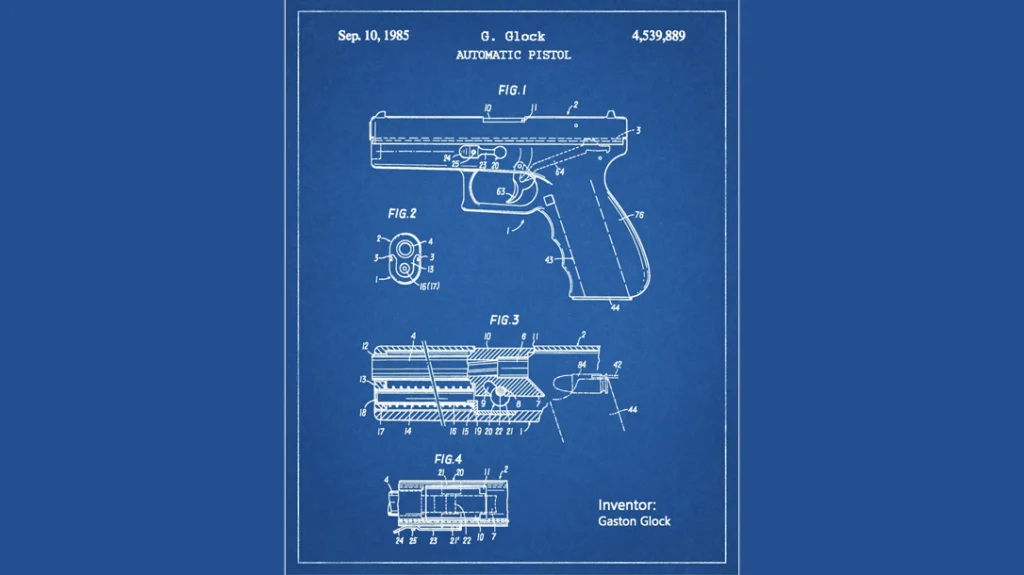
Advertisement — Continue Reading Below
The Glock 17’s design also incorporated a Safe Action System, which eliminated the need for an external manual safety. Instead, the gun featured multiple internal safeties, including a trigger safety, firing pin safety, and drop safety, all contributing to a safer, more user-friendly gun. While this was initially considered somewhat controversial, time has proven that Glock’s simple, durable, and easy-to-use design appeals to law enforcement and military agencies worldwide, as well as those in the civilian market. By the mid-1980s, the Glock 17 had become a favorite among police forces, setting the stage for future dominance in the handgun market.
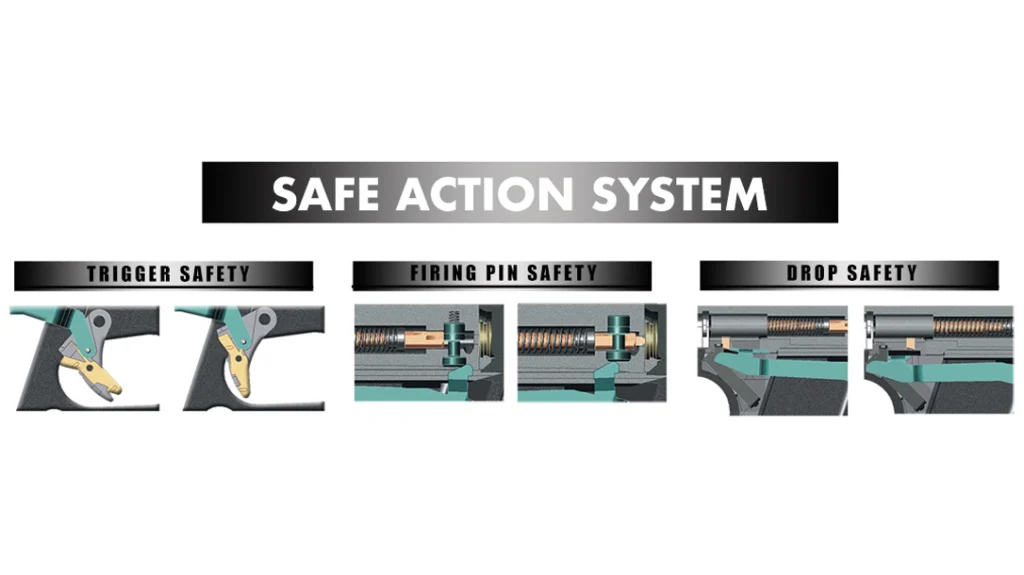
Before Glock…
As innovative as the Glock was, it must be noted that the Heckler & Koch VP70 beat Gaston to the punch as the first ever polymer-framed, striker-fired pistol by over a decade, and was almost as futuristic-looking at the C93 was in the late 19th century. Unfortunately, it was designed primarily as a select-fire partisan weapon to be used against a feared Soviet invasion and left a lot to be desired as a police/carry weapon. The stockless, semi-auto version, with a famously heavy trigger pull and grip-mounted magazine release, never really caught on outside of Hollywood.These drawbacks did not detract from the fact that it had demonstrated that a polymer frame and striker firing system could work quite well together: The VP70 crawled, one might say, so that the Glock could run.
Advertisement — Continue Reading Below
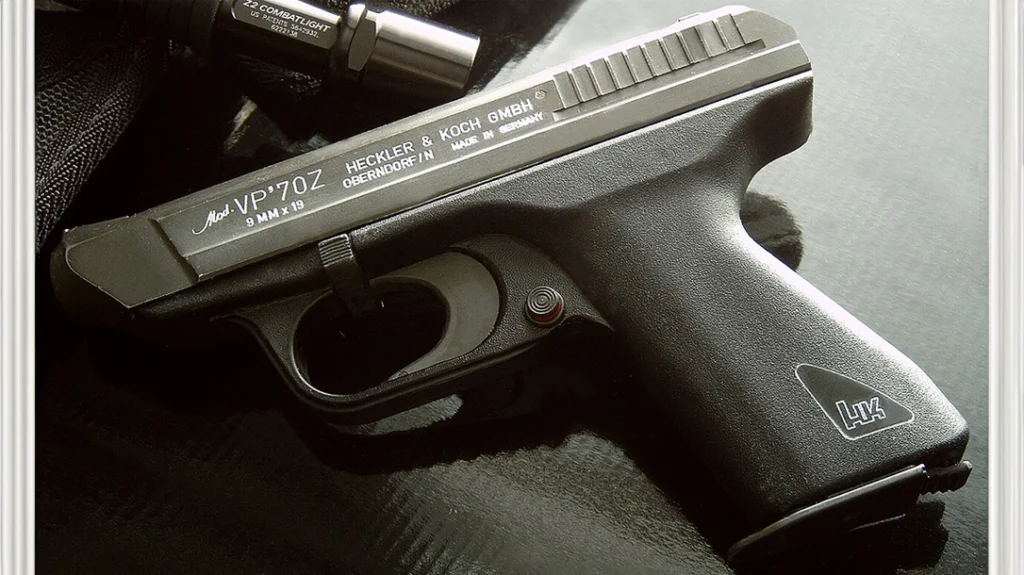
From Unusual to Everyday: The 20th Century
Glock enjoyed major success, particularly with heavy marketing toward Law Enforcement. The simple, streamlined gun was pitched as the modern version of the police revolver, and with some heavy incentives, it became clear that many cops found this to be true. Other manufacturers saw this success and followed suit within a few decades, developing their own striker-fired handguns.
1. Smith & Wesson M&P (Military & Police): Launched in 2005, the M&P series was designed for both law enforcement and civilian markets. It featured a polymer frame, a striker-fired action, and an ergonomic grip, and is today considered a standard alternative to Glock.
Advertisement — Continue Reading Below
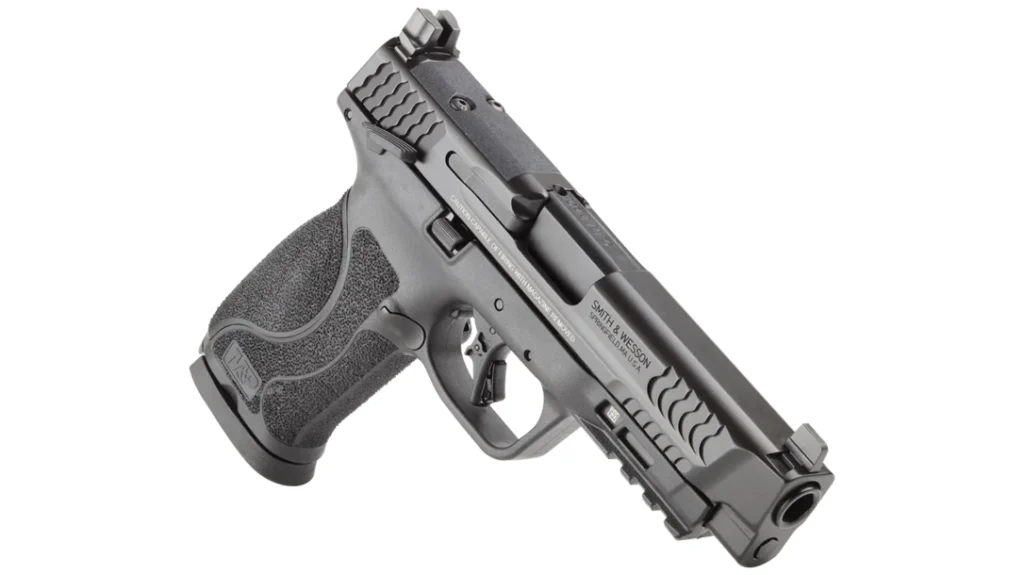
2. Sig Sauer P320: the P320 quickly gained recognition upon release in 2014 for its extreme modularity, which is outmatched only perhaps by the AR-15 platform. Owners could change calibers, barrels, grip sizes, and even the frame of the P320, making it incredibly versatile. The U.S. military adopted a modified version of the P320 as its standard service pistol in 2017, making it the first polymer, striker-fired handgun in general US military service, with a special edition even being issued to the guards at the Tomb of the Unknown Soldier.
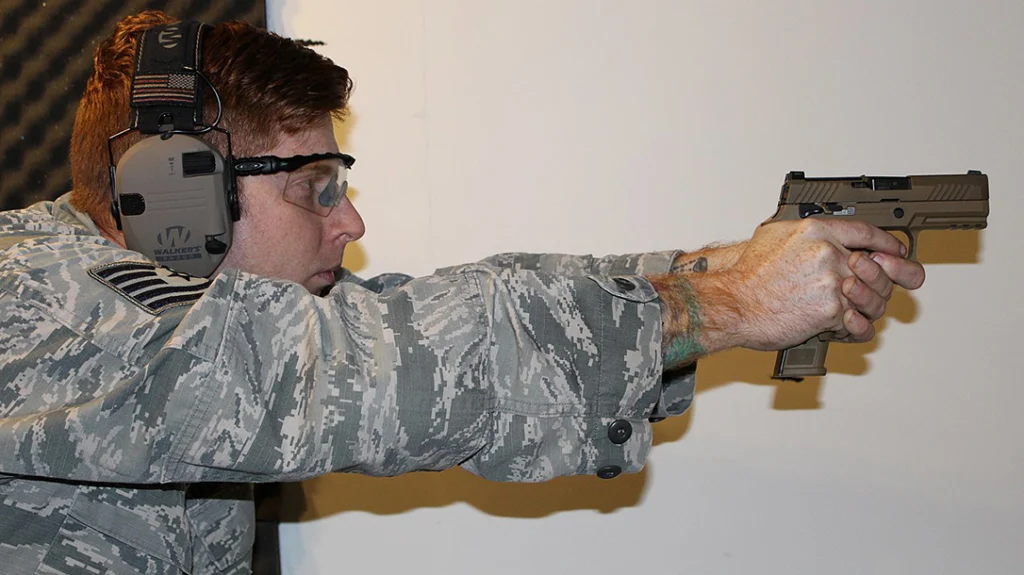
Advertisement — Continue Reading Below
3. Springfield XD Series: Springfield Armory’s XD series, developed in Croatia as the HS2000, was introduced to the U.S. market in 2001. With a robust design, familiar 1911-style grip safety, (and perhaps most significantly) affordable price point, the XD series rapidly became the “just as good” counter to the Glock in the early 2000’s.
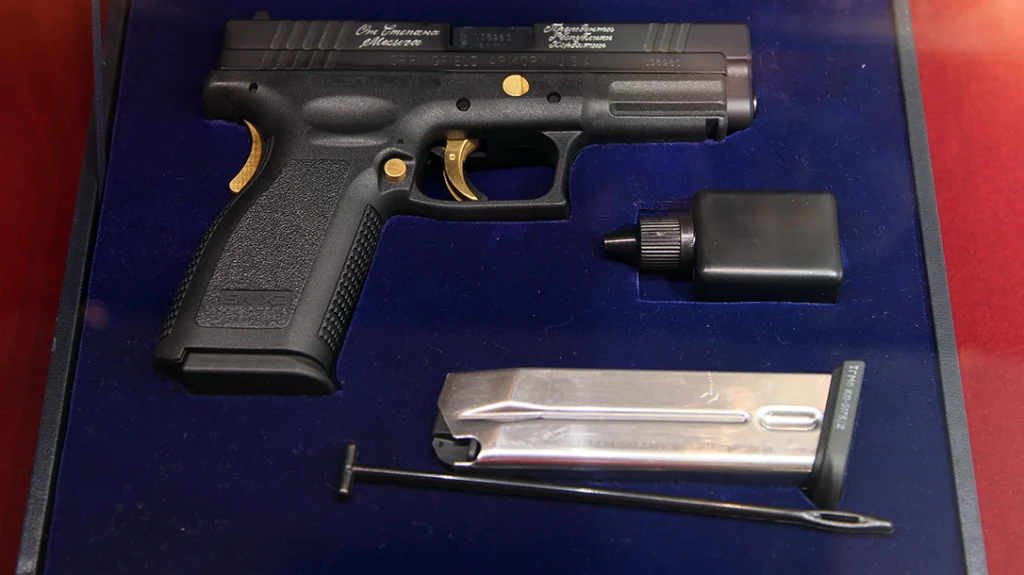
4. Heckler & Koch VP9: Released in 2014, the VP9 became known for its excellent trigger and ergonomics (they clearly took lessons from the VP70). H&K, which had generallyfocused on hammer-fired designs like the USP and P30, developed the VP9 to address the expanding market for such weapons.
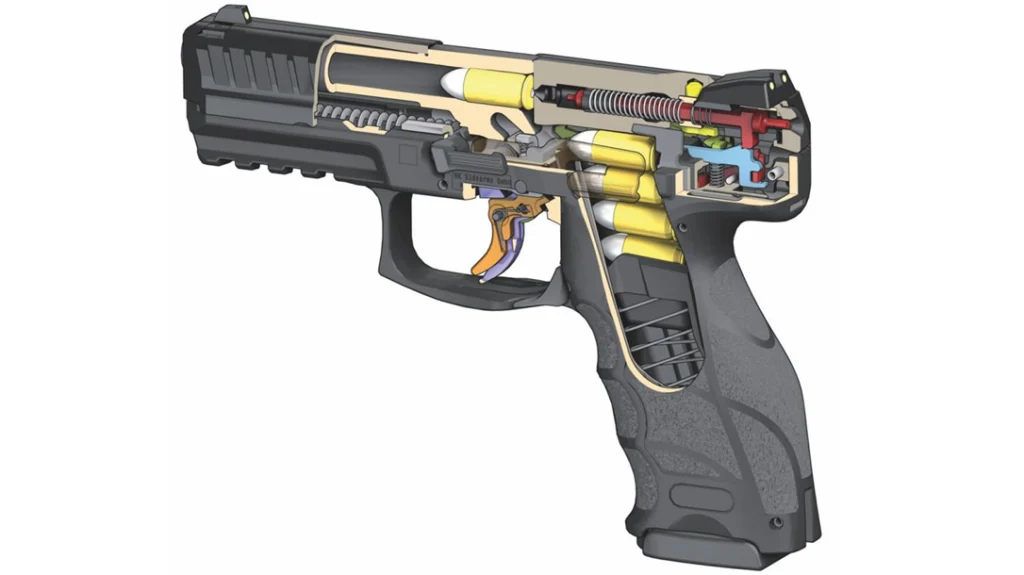
21st Century and Beyond
From their early roots in the late 19th century to their dominance over 100 years later, striker-fired handguns have come a long way. The simplicity and reliability of the striker-fired mechanism have made it the go-to choice for law enforcement, military, and civilian users worldwide. While future developments in ergonomics, materials science, cartridge design and more are certain to come, it will be some time before the guns we associate with this platform are retired. Manufacturers seem eager to meet changing demands, as evidenced by the influx of optics-ready handguns in the last decade, and it will be exciting to see what the future holds for those who carry these tools for work, personal safety, pleasure, or sport.


